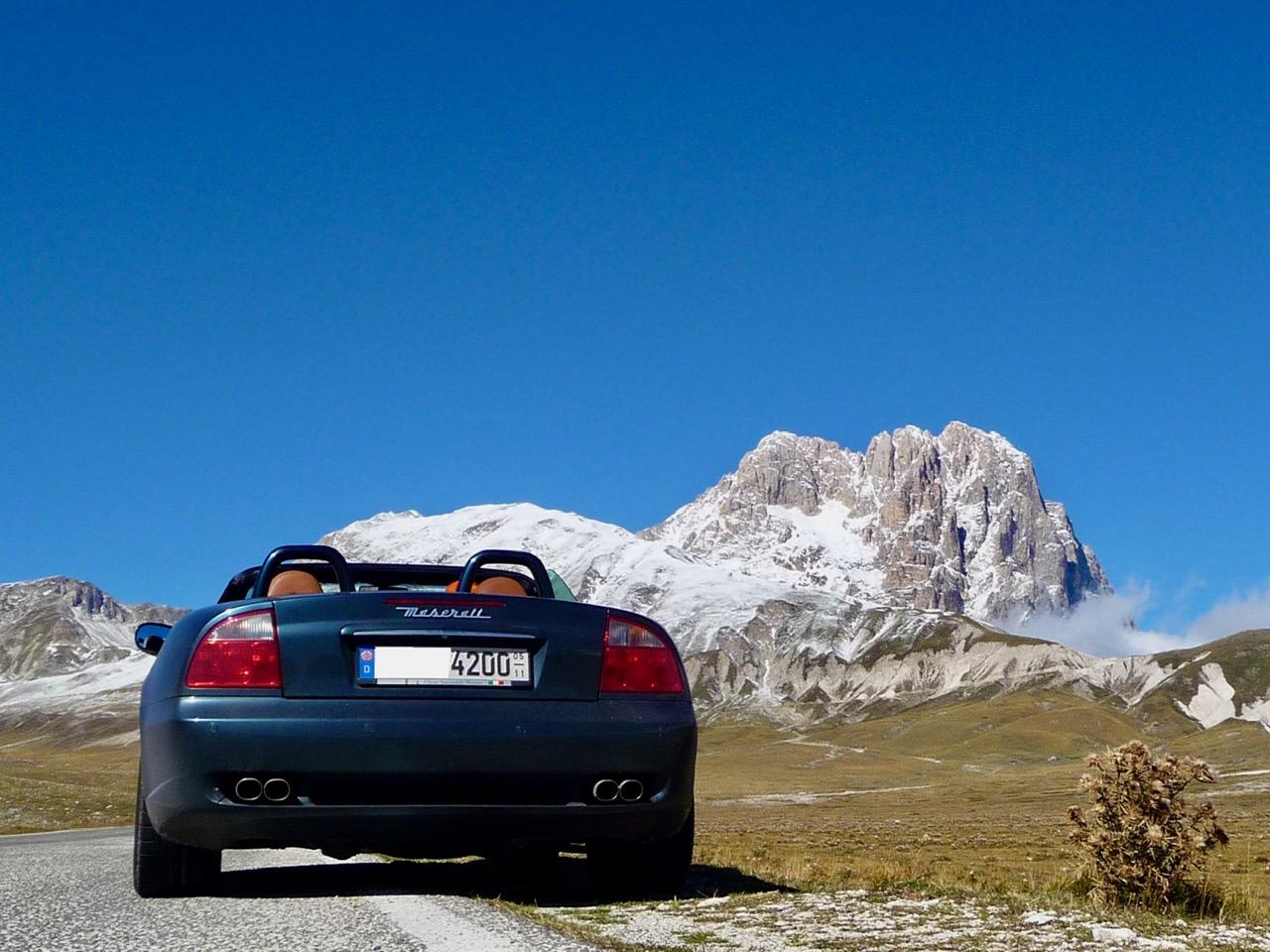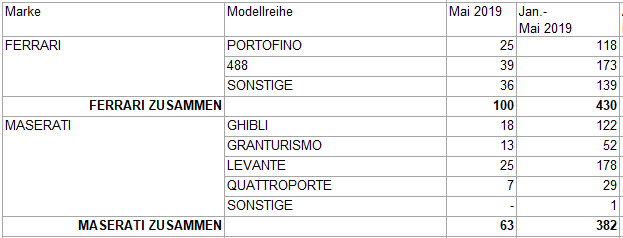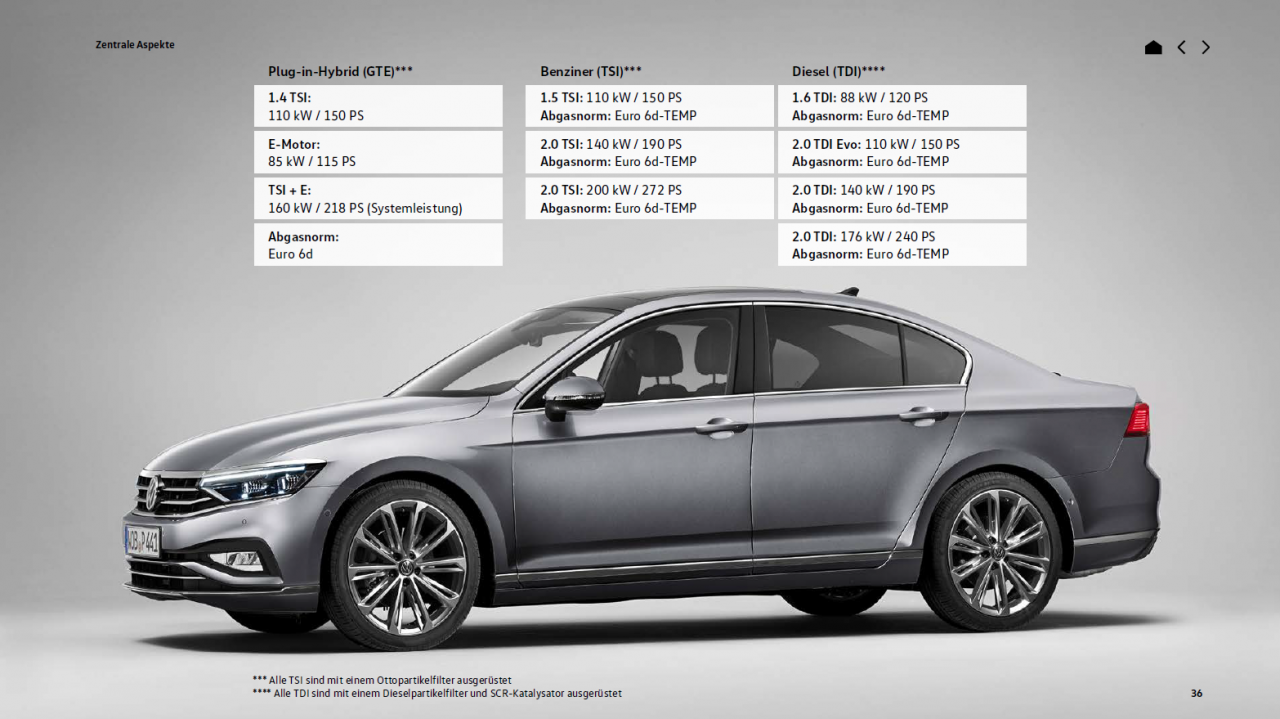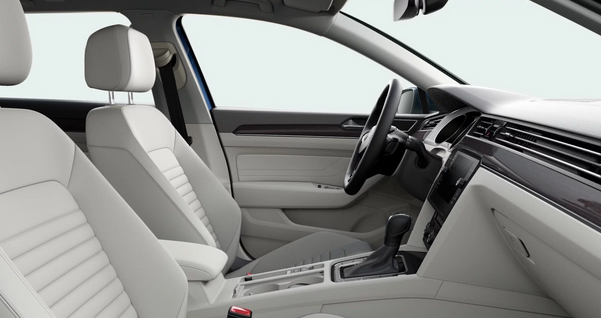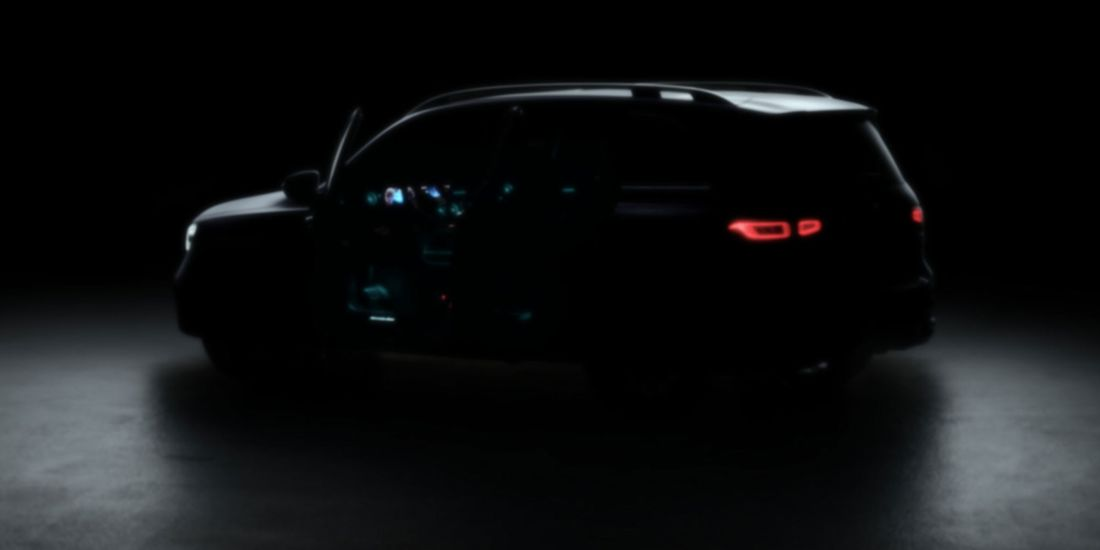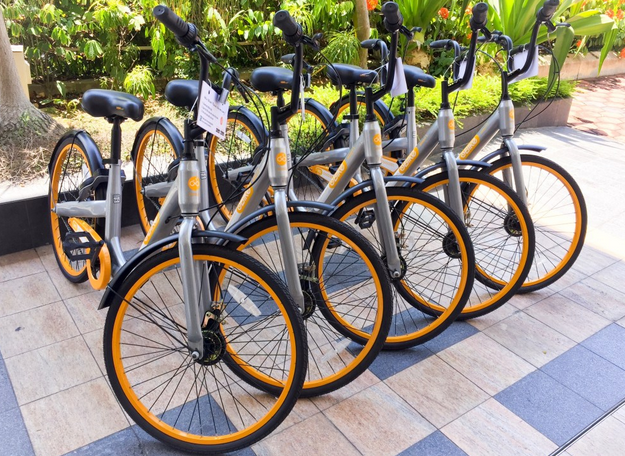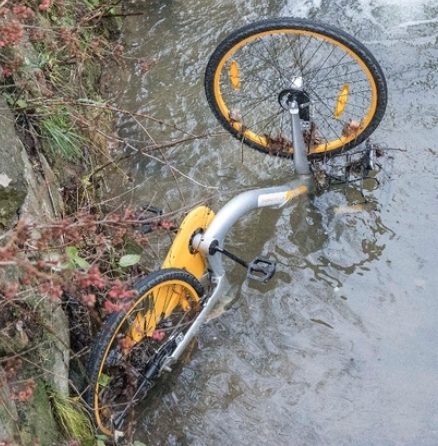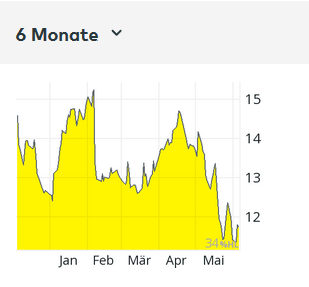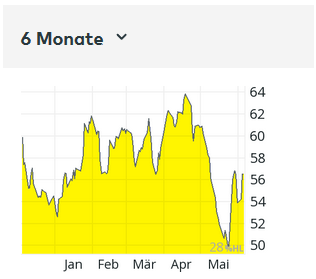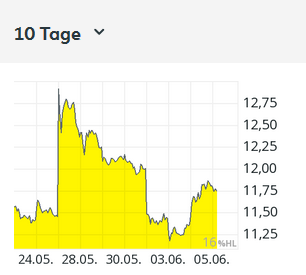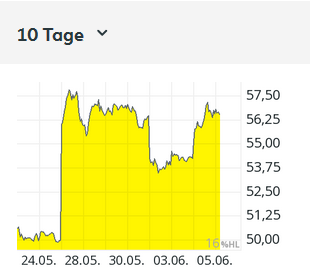-
Numero contenuti pubblicati
13034 -
Iscritto il
-
Ultima visita
-
Giorni Massima Popolarità
57
Tipo di contenuto
Forum
Galleria
Calendario
Download
Articoli del sito
Store
Blog
Tutti i contenuti di 4200blu
-
ha un accordo con BMW per una nuova piattaforma elettrica, e sono in discusione per la prossima piattaforma TA.
- 1174 risposte
-
- fca-renault
- fiat
-
(e 2 altri in più)
Taggato come:
-
New Mercedes-AMG four-cylinder turbo engine from ultra-modern production: The world's most powerful four-cylinder engine in series production, made in Affalterbach Affalterbach. Four wins: with an output of up to 310 kW (421 hp), the completely newly developed Mercedes-AMG 2.0-litre M 139 engine is the world's most powerful turbocharged four-cylinder engine in series production. With this engine, Mercedes-AMG has even exceeded the previously most powerful M 133 by 30 kW (41 hp). Maximum torque has also increased from 475 to up to 500 newton metres. With an output per litre of up to 155 kW (211 hp), the new Mercedes-AMG high-performance turbo engine even ranks ahead of many well-known super-sports car engines. The new, highly efficient powerpack is produced on an innovative production line in Affalterbach, on the "One Man, One Engine" principle. The four-cylinder available in two output versions will ensure agile performance for the compact models of Mercedes-AMG: with 310 kW (421 hp) as the S-model and with 285 kW (387 hp) in the basic version. This product policy logic has already proved successful in the V8-powered AMG Performance models, and more closely meets customer wishes. Apart from its performance figures, the new engine impresses with its immediate response. To this end the torque curve was carefully balanced ("torque shaping"): The peak torque of 500 newton metres (480 newton metres for the basic version) is available in a range of 5000-5250 rpm (4750-5000 rpm in the basic version). With this configuration, the AMG engineers have achieved a power delivery similar to that of a naturally aspirated engine for an even more emotive driving experience. The engine developers were also able to realise a dynamically increasing torque curve in the lower engine speed range, thereby improving agility. The increasing torque at higher rpm makes the engine more free-revving. Moreover, the high maximum engine speed (up to 7200 rpm) confirms the M 139 as a sports engine. "We already set the benchmark in the segment with the preceding engine. This fundamentally new four-cylinder presented us with the challenge of doing even better. And we succeeded with a number of sometimes revolutionary solutions. With the M 139, we have once again impressively demonstrated the engine expertise of Mercedes-AMG. Not only is the output per litre unrivalled for a turbocharged engine, the high level of efficiency also demonstrates that the internal combustion engine still has further potential," says Tobias Moers, Chairman of Mercedes-AMG GmbH. Why "One Man, One Engine" was reinvented The new engine is entirely assembled by hand. On the first floor of the AMG engine manufactory in Affalterbach, a completely newly designed production line was installed in which Mercedes-AMG has brought the "One Man, One Engine" principle to a new level together with Industry 4.0 methods that incorporate the latest findings in ergonomics, materials handling, quality assurance, sustainability and efficiency. On the road to implementing Industry 4.0, AMG's hand assembly operation likewise follows the vision of "smart production". This excels with maximum flexibility, and is transparent and highly efficient. It safeguards and improves the quality of the engines and production processes using innovative and digital technologies. "We have completely revised the principle of "One Man, One Engine" for assembly of the M 139. The result is an ultra-modern production process that places the focus on people. To achieve this, we created the ideal working conditions in a bright, precisely organised and clean environment for our employees. This provides the best basis for continuing to ensure our high quality level even as the technology becomes more complex," says Emmerich Schiller, COO and member of the Board of Management at Mercedes-AMG GmbH. Why a 180-degree rotation brings many advantages The new engine excels with numerous intelligent design features. Compared to the likewise transversely installed M 260 four-cylinder in the "35" models or the preceding M 133 engine, the new Mercedes-AMG M 139 is rotated around its vertical axis by 180 degrees. This means that the turbocharger and the exhaust manifold are now positioned at the rear, on the side of the firewall when viewed from behind. The intake system is therefore positioned at the front. This configuration allows the flattest possible and aerodynamically advantageous front section design. Furthermore, the new arrangement allows much improved air ducting with shorter distances and fewer diversions - both on the intake and exhaust side. How roller bearings improve the responsiveness of the turbocharger The new twinscroll turbocharger combines optimum responsiveness at low engine speeds with a high power in the upper rpm range. In addition to this, the turbine housing is divided into two flow passages which run parallel to one another. Together with the likewise divided ducts in the exhaust manifold, this makes it possible to feed the exhaust flow to the turbine separately. The aim is to prevent the individual cylinders from influencing each other negatively during load cycles, and to improve the gas cycle. The result is higher torque at lower engine speeds, and extremely good responsiveness. Furthermore, the shafts of the compressor and turbine have roller bearings for the first time ‑ as in the top output variant of the AMG 4.0-litre V8 engine in the AMG GT 4-door Coupé. The roller bearings reduce mechanical friction within the turbocharger to a minimum. The charger therefore responds more readily and reaches its maximum speed of up to 169,000 rpm more rapidly. How electronic charge pressure control optimises responsiveness With a maximum charge pressure of 2.1 bar (1.9 bar in the basic version), the 2.0-litre turbo engine is also the top performer in this respect. The electronically controlled wastegate (exhaust relief valve) allows the charge pressure to be controlled even more precisely and flexibly while optimising responsiveness, especially when accelerating from partial load. Numerous parameters are taken into account in this process. The main input signals for the wastegate control unit are the charge pressure, throttle flap position and the knocking tendency. The modifying signals include the intake air temperature, engine temperature, engine speed and atmospheric pressure. This also makes temporary boosting of the charge pressure (overboost) possible under acceleration. Fresh air is used in addition to oil and water to cool the turbocharger. This is directed specifically to the charger from the radiator grille, via the engine cover designed as an air deflector and ducts beneath the bonnet. The concept is based on the principles and experience gained with the cooling for the internally mounted turbochargers of the current AMG 4.0-litre V8 engines, starting with the AMG GT in 2014. In addition the turbine housing has integral insulation. The advantages of the crankcase The all-aluminium crankcase is a chill-cast unit which excels with outstanding material properties. In this process the molten aluminium is poured into the metallic mould using the effect of gravity. Thanks to its good thermal conductivity, the water-cooled mould allows rapid cooling and solidification of the melt. The result is a fine-grained, dense structure that guarantees very high strength. Complex interior geometries can be realised with the help of enclosed sand cores. The so-called closed-deck construction – a design from motor racing ‑ ensures outstanding rigidity with low weight, and allows peak combustion pressures of up to 160 bar. The areas around the cylinders are mostly solid, and the cover plate is only penetrated by smaller ducts for the coolant and engine oil. The crank assembly with a lightweight, forged steel crankshaft and forged aluminium pistons with optimised piston rings combines low friction with high strength. The maximum engine speed is 7200 rpm, and peak output is developed at 6750 rpm. The sump features baffle plates so that despite the larger sump, and even under high lateral acceleration forces, there is always sufficient engine oil to lubricate all the relevant components. Why the cylinder liners are coated with NANOSLIDE To reduce friction between the pistons and cylinders, the linings are coated using patented NANOSLIDE technology. This gives the linings a mirror-like surface for minimal friction, is twice as hard as conventional grey cast-iron liners and therefore makes them much more durable. NANOSLIDE was developed by Daimler AG, and is protected by more than 90 patent families and more than 40 patents. The coating was first used for AMG's M 156 engine, has benefitted further AMG engines for many years and can also be found in the Formula 1 engine of Mercedes AMG Petronas Motorsport. How larger exhaust valves ensure faster gas cycles Repositioning and slightly angling the injection nozzles and spark plug system in the cylinder head made it possible to greatly enlarge the exhaust valves compared to those of the preceding M 133 engine. The larger exhaust cross-sections allow the gases to stream out of the combustion chambers with low losses, and reduce the overall piston venting action. More efficient cylinder head cooling was achieved by seating rings with a reduced installed height and a cooling borehole near the combustion chamber, in the web area between the exhaust seating rings. The cooling performance was also improved by a near-surface water jacket geometry, a faster flow rate and an optimised volumetric flow rate. A multi-layered, state-of-the-art corrugated metal seal isolates the cylinder head from the crankcase. Two overhead camshafts control the 16 valves via weight-optimised roller cam followers. Camshaft adjustment on the inlet and outlet side allows an excellent response and optimises the gas cycle for each operating point. Variable CAMTRONIC valve control on the exhaust side is another feature, with two cams per valve. The cams have different geometries, so that depending on the cam setting to suit the driving situation, the exhaust valves can be opened for short or long periods – for even better responsiveness at low engine speeds, comfortable and fuel-efficient driving at medium rpm and full power delivery in the upper rpm range. How the fuel injection combines the best of both worlds Turbocharging and direct injection with a spray guided combustion process not only allow a high power yield, but also improve thermodynamic efficiency and therefore reduce both fuel consumption and exhaust emissions. For the first time, the new high-performance four-cylinder has two-stage fuel injection. In the first stage the particularly fast and precisely operating piezo injectors supply fuel to the combustion chambers at a pressure of up to 200 bar. This is a multiple process at times, and is controlled by the engine management system as required. In the second stage there is additional intake manifold injection using solenoid valves. This is needed to achieve the engine''s high specific output. The electronically controlled fuel supply has an operating pressure of 6.7 bar. How the sophisticated cooling system increases power The high output requires an intelligently conceived cooling system. An additional radiator in the wheel arch supplements the large unit in the front level of the main module. A low-temperature circuit is also used for air/water intercooling. Together with the intercooler connected in series, the coolant flow through the radiators is assisted by a high-performance electric pump. This provides for ideal cooling of the highly compressed charge air, thereby contributing towards optimum engine performance. Cooling of the transmission oil is integrated into the engine's coolant circuit, and is assisted by a heat exchanger mounted directly on the transmission. The engine control unit is mounted on the air filter housing, where it is cooled by an airflow. Why the electric water pump brings numerous advantages The demand-controlled, electric high-performance water pump operates independently of the engine speed. Late activation during warm-up means that the engine block warms up more rapidly, with a positive effect on friction, consumption and emissions. The pump can also be switched on or off as required when driving under less power or at low engine speeds. Furthermore, the electric water pump ensures the full engine output and optimum heat dissipation over the entire engine speed range. It also protects against thermal damage when idling in very high ambient temperatures. Functions such as alternator management, the ECO start/stop function with fast restarting, the gliding function and a petrol particulate filter are also part of the technology package for the new AMG four-cylinder. How the new process makes work easier and improves efficiency The new AMG 2.0-litre turbocharged four-cylinder engine with the in-house designation M 139 is assembled entirely by hand following the traditional AMG principle of "One Man, One Engine" – but with a completely new, digitally supported process and logistical organisation. People are the main consideration in all activities. The employees are optimally assisted in their work by digital tools. The focus is on the use of intelligent, flexible technology. The key element in this modern production process is a combination of highly flexible line assembly and preconfigured shopping carts using driverless transport systems. The aspect of sustainability was also a fundamental part of the planning for the new M 139 production line. Production uses renewable energy sources, and considerably reduces CO2 emissions, water consumption and waste. How the new assembly cart makes work easier The assembly cart on which the M 139 is put together was developed with the employees working as a team. It has its own, independent power supply and therefore needs no power cables. All the necessary operating fluids and tools are ergonomically arranged on and around the cart, making work easier, minimising distances and improving efficiency. The integrated tablet PC assists the employee with precise, clearly formulated working instructions. Manuals and guidelines are a thing of the past – manufacturing is now paperless. Why the employees call it "blue sky" The new cordless screwdrivers are immediately to hand, and no longer need to be grabbed from overhead at each station as suspended, wired tools as before. This is why the employees refer to their workplace as "blue sky", as there are no longer any power cables hanging from the ceiling. The assembly shop makes a bright and airy impression, and creates a pleasant working climate. Comprehensive digitisation improves both the efficiency and flexibility of the manufacturing process: Each tool is connected to the WLAN of the engine assembly shop – enabling and torque settings for the relevant assembly stage can therefore be automated by indoor tracking. Furthermore, all completed tasks are digitally recorded, guaranteeing optimum quality assurance, reproduceability and transparency. The advantages of the driverless transport systems Each assembly technician is followed by a driverless transport system. Its shopping cart has precisely the components needed to complete the engine being assembled. The transport systems are loaded up at the Mercedes-AMG logistical centre in Marbach, and delivered to the production line on a "just in sequence" basis. Autonomous control is also carried out by indoor tracking via WLAN. All components can be digitally tracked. The assembly and transport carts are designed in a black-and-white Mercedes-AMG look, and carry slogans such as "START YOUR ENGINE" or "AMG PERFORMANCE INSIDE". This contributes to motivation and identification with the company. In the same vein, the shop floor has hatching and white-and-red stripes reminiscent of the kerbs and guide rails on racetracks. Why the test stations are also more efficient In parallel with this, the number of test stations was reduced by grouping several individual stations into three central stations: Drag torque test, leakage test for oil/coolant and fuel systems as well as for complete engine water jacket. The result is a considerable time saving and therefore greater efficiency. Here too, all parameters and measured values are digitally recorded and stored so that the assembly of each individual engine can be tracked. The assembly philosophy of "One Man, One Engine" is a hallmark of the Mercedes-AMG brand. Another characteristic feature of the M 139 is therefore the AMG engine plate carrying the signature of the assembly technician. All assembly technicians for the new four-cylinder engine were given extensive further training. echnical data at a glance Mercedes-AMG M 139 2.0 litre turbocharged four-cylinder engine Displacement 1991 cc Bore x stroke 83.0 x 92.0 mm Output 310 kW (421 hp) at 6750 rpm (S-model) 285 kW (387 hp) at 6500 rpm (basic version) Peak torque 500 Nm at 5000-5250 rpm (S-model) 480 Nm at 4750-5000 rpm (basic version) Max. engine speed 7200 rpm Compression ratio 9.0:1 Turbocharging One twinscroll turbocharger with roller-bearing compressor and turbine wheels Max. charge pressure 2.1 bar (S-model) 1.9 bar (basic version) Mixture formation Combined direct and manifold injection. 1.) Third-generation multiple direct injection. Fast and precise piezo injectors spray the fuel into the combustion chambers at high pressure 2.) Additional intake manifold injection with solenoid valves Cylinder head Two overhead camshafts, 16 valves, adjustable intake and exhaust camshafts, CAMTRONIC valve timing adjustment for the exhaust camshaft Max. air mass throughput 1,200 kg/h (S-model) 1,100 kg/h (basic version) Engine weight (wet) 160.5 kg
-
Forse e piu di un problema del prodotto offerta, perche vende bene una Ferrari, invece una Maserati molto meno caro vende cosi male? Solo colpa del mal carattere dei tedesci? Per troppo semplice questa spiegazione, sorry. Come gia scritto qui da altri, Ferrari lavora con la sua gamma come deve essere per una marca di alta prestazioni, Maserati offre macchine vecchie e posizionato falso e il conto e che non vendono.
- 1174 risposte
-
- 4
-

-
![TESLA Hug [Trolling Mode]](https://www.autopareri.com/uploads/reactions/teslacare.png.6593869a254d560c62f48aa712e2b7bb.png)
-
- fca-renault
- fiat
-
(e 2 altri in più)
Taggato come:
-
- 1174 risposte
-
- 3
-

-
![TESLA Hug [Trolling Mode]](https://www.autopareri.com/uploads/reactions/teslacare.png.6593869a254d560c62f48aa712e2b7bb.png)
-
- fca-renault
- fiat
-
(e 2 altri in più)
Taggato come:
-
in quelli listini si trova questi modelli? Quanta costano e quando sono configurabile e ordinabile?
- 1174 risposte
-
- 6
-

-

-
![TESLA Hug [Trolling Mode]](https://www.autopareri.com/uploads/reactions/teslacare.png.6593869a254d560c62f48aa712e2b7bb.png)
-
- fca-renault
- fiat
-
(e 2 altri in più)
Taggato come:
-
Per quelli che conoscono il tedesco un commento della "Handelsblatt" (Giornaliera economica) In sintesi: Renault dovrebbe essere felice, che la fusione con FCA e fallito, perche alla fine sia stato quasi un suicidio per Renault perche con la fusione con FCA hanno rischiato la cooperazione con Nissan. E questa Nissan ha molto piu di offrire come FCA, che ha solo un affare nord americano con vecchie succhie di benzina ma niente contenuti per il futuro del automobile. Die Fusion mit Fiat Chrysler wäre für Renault selbstmörderisch gewesen Renault kann froh sein, dass die Fusion mit Fiat Chrysler geplatzt ist. Denn ein Zusammenschluss hätte den Konzern nur auf dem Papier gestärkt. https://www.handelsblatt.com/meinung/kommentare/kommentar-die-fusion-mit-fiat-chrysler-waere-fuer-renault-selbstmoerderisch-gewesen/24428042.html
- 1174 risposte
-
- 9
-

-

-
- fca-renault
- fiat
-
(e 2 altri in più)
Taggato come:
-
- 191 risposte
-
- volkswagen
- volkswagen ufficiale
- (e 7 altri in più)
-
con un po di cura e trattamento (2 volte al anno) non ho mai avuto problemi con pelli chiari
- 191 risposte
-
- volkswagen
- volkswagen ufficiale
- (e 7 altri in più)
-
- 191 risposte
-
- 1
-

-
- volkswagen
- volkswagen ufficiale
- (e 7 altri in più)
-
..ma non ci sono gia a questa strada?
- 1174 risposte
-
- 6
-

-

-
- fca-renault
- fiat
-
(e 2 altri in più)
Taggato come:
-
- 117 risposte
-
- mercedes
- mercedes glb
-
(e 4 altri in più)
Taggato come:
-
ma Hyundai/Kia fa gia 7,5Mio per se stesso....?
- 1174 risposte
-
- 2
-

-
- fca-renault
- fiat
-
(e 2 altri in più)
Taggato come:
-
..non solo il prezzo..anche il volume della produzione e simile.
- 30 risposte
-
- bmw ufficiale
- bmwm
- (e 8 altri in più)
-
Si certo, il peso e alto, ma questo e una problema di tutti le macchne moderne, troppo grosso, troppo largo, troppo pesante - ma questa e la vista dei clienti "vecchio stile" europei. Ti posso capire molto bene, anch'io trovo strano una macchina sportiva / granturismo con piu di due tonnellate. Ma una GranCabrio, senza motore Biturbo (con tutto i suoi pesi addizionale in paragone di una aspirata), senza trazione integrale e con una struttura/rigidezza della carrozzeria piu di una banana come una costruzione rigido, ha quasi lo stesso peso come la M8 cabrio, cosi anche in Maserati non fanno meglio. (esattamente questa grandezza e questo peso per me personalmente e la motivazione di non comprare una macchina come GC o M8 cabrio, ma il mercato globale pensa diverso). La tua discussione per i prezzi - d'accordo, hai raggione con molti argomenti - ma al momento in vista globale funziona cosi, ci sono in giro troppi soldi di gente che comprano una macchina cosi solo per mostrare, per posing, non per usare in senso originale. Ma anche questo e valido per tutte le macchine/marchi del segmento sportivo di lusso. Se cerchi solo una macchina per divertirti in qualche giri sulle strade curvosi delle Dolomiti, Haute Alpes o Sardegna poi prendere una M2 oppure una Cayman GT4 e hai tutto che necessario. O forse meglio una M3 E30 Evo, una Ur-quattro, una 993, una 355GTS ecc. ecc..
- 30 risposte
-
- bmw ufficiale
- bmwm
- (e 8 altri in più)
-
..purtroppo ne Alfa ne Maserati hanno prodotti cosi nella gamma...cosi per un possibile cliente non c'e una alternative per una 8er coupe o cabrio... ...ma chi vuole una berlina pompata se esiste anche una Cabrio??? ..sicuramenta non il argomento in che una possibile clientela di una M8 (o anche AMG GT) e interessato in primis...forse uno che guardo subito all prezzo non guardo alla macchina guista per lui
- 30 risposte
-
- bmw ufficiale
- bmwm
- (e 8 altri in più)
-
Communicato ufficiale della BMW Group BMW Group and Jaguar Land Rover announce collaboration for next-generation electrification technology Munich. As it develops its plans for the mobility of the future, the BMW Group is increasingly focusing on co-operations to help make next-level electrification technology more widely available to customers by the start of the coming decade. Cooperation between car manufacturers to share know-how and resources is important as the automotive industry tackles the significant technological challenges of autonomous driving, connectivity, electrification and services (ACES). After three years of Strategy NUMBER ONE > NEXT, the BMW Group remains firmly on track, having established a strong position as one of the world's top providers of e-mobility. The BMW Group is leading the global premium market with the largest portfolio of electrified vehicles and the biggest market share among traditional luxury rivals. Highly-integrated electric drive train The BMW Group and Jaguar Land Rover today confirmed they are joining forces to develop next generation electric drive units in a move that supports the advancement of electrification technologies necessary to transition to an ACES future. The BMW Group and Jaguar Land Rover share the same strategic vision of environmentally-friendly and future-oriented electric drive technologies. The BMW Group brings long experience of developing and producing several generations of electric drive units in-house since it launched the pioneering BMW i3 in 2013. Jaguar Land Rover has demonstrated its capability with this technology through the launch of the Jaguar I-Pace and its plug-in hybrid models. The BMW Group’s most sophisticated electrified technology to date features an electric motor, transmission and power electronics in one housing. This electric motor does not require rare earths, enabling the BMW Group to reduce its dependence on their availability as it continues to systematically broaden its range of electrified models. Starting next year, the BMW Group will introduce this electric drive unit, the fifth generation (“Gen 5”) of its eDrive technology, with the BMW iX3 Sports Activity Vehicle. The Gen 5 electric drive unit will be the propulsion system upon which subsequent evolutions launched together with Jaguar Land Rover will be based. “The automotive industry is undergoing a steep transformation. We see collaboration as a key for success, also in the field of electrification. With Jaguar Land Rover, we found a partner whose requirements for the future generation of electric drive units significantly match ours. Together, we have the opportunity to cater more effectively for customer needs by shortening development time and bringing vehicles and state-of-the-art technologies more rapidly to market,” said Klaus Fröhlich, Member of the Board of Management of BMW AG, Development. The cooperation allows the BMW Group and Jaguar Land Rover to take advantage of cost efficiencies arising from shared development of future evolutions and production planning costs as well as economies of scale from joint purchasing. A joint team of BMW Group and Jaguar Land Rover experts located in Munich will be tasked with further developing the Gen 5 power units with production of the electric drivetrains to be undertaken by each partner in their own manufacturing facilities. Both companies will seek to adhere to their own brand-specific propositions in any project. Technology openness The development of multiple new technologies is required for the company to meet customer and regulatory requirements around the world, which often vary by market. This means that the BMW Group will continue to improve its combustion engines, while also pushing forward the e-mobility strategy with both battery-electric vehicles and plug-in hybrids and investing in new technologies such as fuel–cell powertrains.
- 10 risposte
-
- 2
-

-

-
- land rover
- jaguar
-
(e 2 altri in più)
Taggato come:
-
con l'unica differenza, che con una BMW puoi andare ad un cliente o mandante, con una Ferrari no.
- 30 risposte
-
- 1
-

-
- bmw ufficiale
- bmwm
- (e 8 altri in più)
-
- 1174 risposte
-
- 4
-

-

-

-
- fca-renault
- fiat
-
(e 2 altri in più)
Taggato come:
-
Siemens Automotive non esiste piu da anni, hanno fusionato con VDO e poi Conti ha comprato Siemens-VDO.
- 30 risposte
-
- 3
-

-

-
- bmw ufficiale
- bmwm
- (e 8 altri in più)
-

BMW e JLR insieme per i motori delle elettriche
nella discussione ha aggiunto 4200blu in Notizie e Scelte Strategiche dal mondo dell'Auto
BMW e JLR svilupperanno assieme la prossima generazione di propulsori per le auto elettriche. BMW, Jaguar Land Rover will jointly develop electric car components FRANKFURT -- BMW said it will develop its next-generation electric motors, transmission and power electronics with Jaguar Land Rover, unveiling yet another industry alliance designed to lower the costs of developing electric cars. "Together, we have the opportunity to cater more effectively for customer needs by shortening development time and bringing vehicles and state-of-the-art technologies more rapidly to market," BMW Group r&d boss Klaus Froehlich said in a statement. BMW aims to have 12 full-electric models by 2025. Currently the BMW brand's sole battery-powered model is the i3 hatchback. Jaguar Land Rover's first EV is the Jaguar I-Pace. BMW and Jaguar Land Rover said they will save costs through shared development, production planning and joint purchasing. A joint team of BMW and Jaguar Land Rover experts located in Munich will be tasked with further developing BMW's fifth -generation eDrive technology that will debut this year on the iX3 battery-powered SUV. The X3 variant will be built in China and exported to the U.S. and Europe. Both companies will produce electric drivetrains in their own manufacturing facilities, BMW said. Nick Rogers, Jaguar Land Rover's engineering director said: "We've proven we can build world beating electric cars but now we need to scale the technology to support the next generation of Jaguar and Land Rover products." Jaguar Land Rover is still run by former BMW managers, including Ralf Speth the company's chief executive who spent 20 years at BMW prior to joining JLR, and Wolfgang Ziebart, the engineer who designed the iPace. Ziebart is a former board member responsible for development and BMW. BMW already has a deal to supply an 8-cylinder engine to Jaguar Land Rover. Jaguar Land Rover said it would redouble efforts to cut costs after it posted a $4 billion loss earlier this year, hit by a downturn in demand for SUVs in China and a regulatory clampdown on diesel emissions. BMW bought Britain's Rover Group, which included the Jaguar and Land Rover brands, for 800 million pounds in 1994. BMW sold Jaguar Land Rover to Ford in March 2000 for $2.7 billion. In 2008 India's Tata Group bought Jaguar and Land Rover from Ford for $2.3 billion.- 10 risposte
-
- 3
-

-

-
- land rover
- jaguar
-
(e 2 altri in più)
Taggato come:
-
- 1174 risposte
-
- 1
-

-
- fca-renault
- fiat
-
(e 2 altri in più)
Taggato come:
-
Mah...ad Alstom lo stato francese e il azionario piu grande con 30% - non ha interessato Vestager.
- 1174 risposte
-
- fca-renault
- fiat
-
(e 2 altri in più)
Taggato come:
-
Ma anche se le due aziende, o Elkann e Macron, come volete, trovano una soluzione accetabile per entrambi, non significa che poi il deal e fatto. Dopo questo venira poi la EU e Verstager che deve dare l'ok - lei hai gia distrutto/stoppato la fusione Siemens-Alstom Rail, che era anche chiaro in vista delle due aziende.
- 1174 risposte
-
- 1
-
![TESLA Hug [Trolling Mode]](https://www.autopareri.com/uploads/reactions/teslacare.png.6593869a254d560c62f48aa712e2b7bb.png)
-
- fca-renault
- fiat
-
(e 2 altri in più)
Taggato come:
-
?????????? Listino per il modello attuale uscente E nessuno ha detto, che un futuro elettrica non costa niente. Macchine a 10k tra qualche anni non ci saranno piu. (ecetto forse qualche usate)

